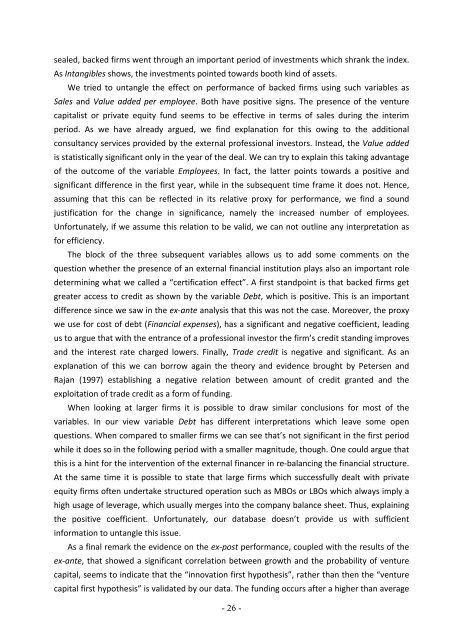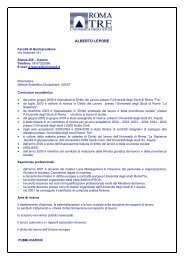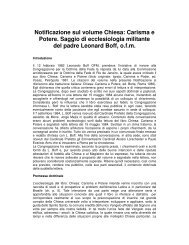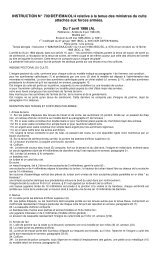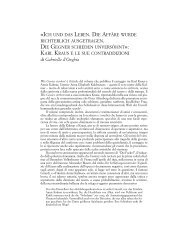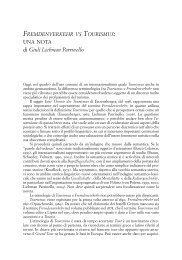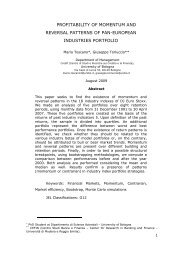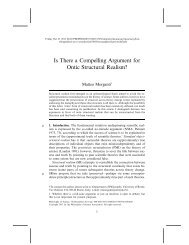Determinants and effects of Venture Capital and Private Equity ...
Determinants and effects of Venture Capital and Private Equity ...
Determinants and effects of Venture Capital and Private Equity ...
You also want an ePaper? Increase the reach of your titles
YUMPU automatically turns print PDFs into web optimized ePapers that Google loves.
sealed, backed firms went through an important period <strong>of</strong> investments which shrank the index.<br />
As Intangibles shows, the investments pointed towards booth kind <strong>of</strong> assets.<br />
We tried to untangle the effect on performance <strong>of</strong> backed firms using such variables as<br />
Sales <strong>and</strong> Value added per employee. Both have positive signs. The presence <strong>of</strong> the venture<br />
capitalist or private equity fund seems to be effective in terms <strong>of</strong> sales during the interim<br />
period. As we have already argued, we find explanation for this owing to the additional<br />
consultancy services provided by the external pr<strong>of</strong>essional investors. Instead, the Value added<br />
is statistically significant only in the year <strong>of</strong> the deal. We can try to explain this taking advantage<br />
<strong>of</strong> the outcome <strong>of</strong> the variable Employees. In fact, the latter points towards a positive <strong>and</strong><br />
significant difference in the first year, while in the subsequent time frame it does not. Hence,<br />
assuming that this can be reflected in its relative proxy for performance, we find a sound<br />
justification for the change in significance, namely the increased number <strong>of</strong> employees.<br />
Unfortunately, if we assume this relation to be valid, we can not outline any interpretation as<br />
for efficiency.<br />
The block <strong>of</strong> the three subsequent variables allows us to add some comments on the<br />
question whether the presence <strong>of</strong> an external financial institution plays also an important role<br />
determining what we called a “certification effect”. A first st<strong>and</strong>point is that backed firms get<br />
greater access to credit as shown by the variable Debt, which is positive. This is an important<br />
difference since we saw in the ex‐ante analysis that this was not the case. Moreover, the proxy<br />
we use for cost <strong>of</strong> debt (Financial expenses), has a significant <strong>and</strong> negative coefficient, leading<br />
us to argue that with the entrance <strong>of</strong> a pr<strong>of</strong>essional investor the firm’s credit st<strong>and</strong>ing improves<br />
<strong>and</strong> the interest rate charged lowers. Finally, Trade credit is negative <strong>and</strong> significant. As an<br />
explanation <strong>of</strong> this we can borrow again the theory <strong>and</strong> evidence brought by Petersen <strong>and</strong><br />
Rajan (1997) establishing a negative relation between amount <strong>of</strong> credit granted <strong>and</strong> the<br />
exploitation <strong>of</strong> trade credit as a form <strong>of</strong> funding.<br />
When looking at larger firms it is possible to draw similar conclusions for most <strong>of</strong> the<br />
variables. In our view variable Debt has different interpretations which leave some open<br />
questions. When compared to smaller firms we can see that’s not significant in the first period<br />
while it does so in the following period with a smaller magnitude, though. One could argue that<br />
this is a hint for the intervention <strong>of</strong> the external financer in re‐balancing the financial structure.<br />
At the same time it is possible to state that large firms which successfully dealt with private<br />
equity firms <strong>of</strong>ten undertake structured operation such as MBOs or LBOs which always imply a<br />
high usage <strong>of</strong> leverage, which usually merges into the company balance sheet. Thus, explaining<br />
the positive coefficient. Unfortunately, our database doesn’t provide us with sufficient<br />
information to untangle this issue.<br />
As a final remark the evidence on the ex‐post performance, coupled with the results <strong>of</strong> the<br />
ex‐ante, that showed a significant correlation between growth <strong>and</strong> the probability <strong>of</strong> venture<br />
capital, seems to indicate that the “innovation first hypothesis”, rather than then the “venture<br />
capital first hypothesis” is validated by our data. The funding occurs after a higher than average<br />
- 26 -


